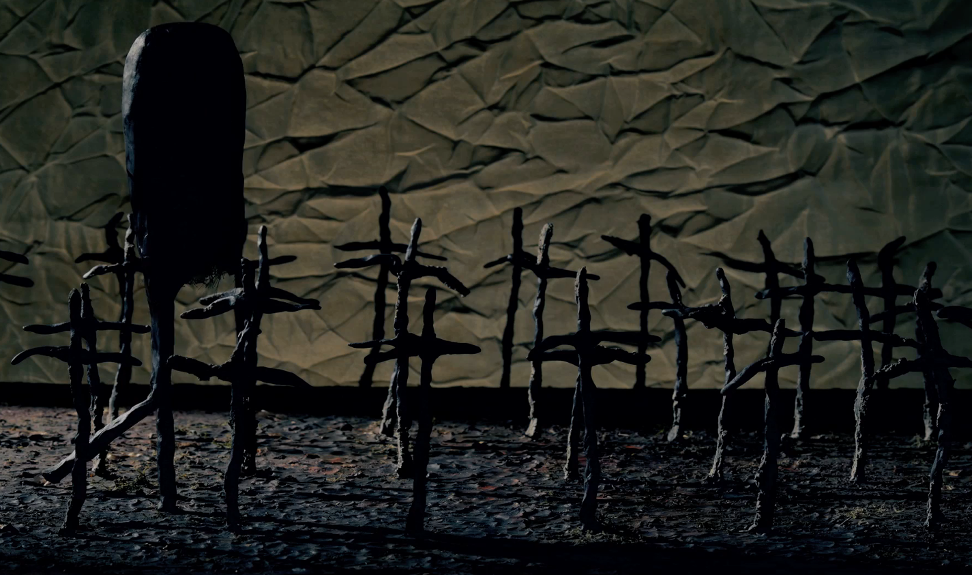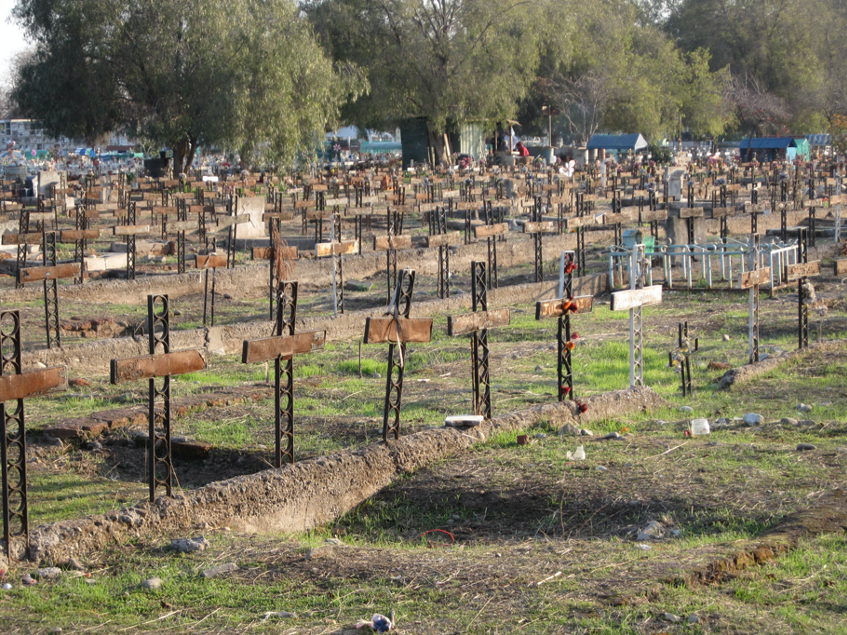In fall and winter of 2019-20, I collaborated with Alice Nelson, a Spanish language and Latin American Studies scholar, teaching the fulltime program “Arts of Urgency: Latin American Film and Literature” at The Evergreen State College. The ability to collaborate across disciplines was one of the things that originally drew me to Evergreen, a public, four-year, liberal arts institution with an alternative curricular structure that emphasizes interdisciplinary pedagogy, collaboration, environmental and social justice, and the integration of theory with practice. Developing “Arts of Urgency” satisfied a longtime desire to integrate my interest in Latin America –especially in regards to US interventionism– with my work in experimental animation. In exploring experimental animation that addresses nonfiction, social and political subjects, I have long felt that the canon, resting on Russet & Starr’s 1976 book Experimental Animation: An Illustrated Anthology, has been slow to integrate works that cross boundaries of both content and form.
More recent scholarship (e.g. see Honess Roe 2013; Harris, Husbands, and Taberham 2019) has begun to fill that gap, but films cited and available to screen for students most frequently focus on people and topics from the global north. Evergreen student demographics make it imperative to show films by a more diverse range of artists. Over 50% are low income, nearly 30% are the first in their family to pursue a college degree, and we are a queer majority campus with over 30% students of color (see “Student Body Fall 2019”).
While seeking more diverse experimental animations, Juan Camilo Gonzalez pointed me to Moebius Animación, a site he collaborated on with Lina Aguirre and Cecilia Traslaviña. After viewing it, I invited Lina to Evergreen to lecture and screen some films. Her 2017 Art Lecture Series talk, “Trends in Latin American Experimental Animation“, surveys how experimental animation has been defined, and then expands on that. She says it can be “… not only a formal quest, but also a creative practice capable of making visible non-dominant ways of experiencing the world in specific contexts.” She uses “structures of feeling,” a term cultural studies theorist and Marxist philosopher Raymond Williams coined in his Preface to Film to describe the work that experimental animation can do to give voice to marginalized experiences (see Williams 1954). For myself as a scholar and practitioner, her talk articulated a much-needed place in experimental animation theory for works that transgress not only formal considerations but also narrative conventions: the boundary between fiction and nonfiction, and social taboos of all sorts. It resonated with another lecture by poet Dawn Lundy Martin who discusses poetry’s role in working with trauma. Speaking about Black women’s lives, she says “trauma ends speech”; traumatic experiences are beyond the capacities of speech and knowing. However, she added that new knowledge can emerge as a result of creative acts that work from spaces of not knowing.
Alice, my co-faculty, focuses her research on how Chileans have been memorializing the history and trauma of the Pinochet dictatorship. Interested in how Latin American artists have responded to violent cultural upheavals and the trauma their communities experience, our syllabus explored the historical and cultural contexts of Latin American film, animation, and literature. We began with the 1960s Third Cinema movement and continued to the present, emphasizing ways artists have participated in urgent struggles for social transformation, and on the role of experimentation in questioning cultural norms. We surveyed: the flourishing of post-revolutionary Cuban cinema; the rise and fall of Chile’s Unidad Popular; correspondences between Third Cinema and Latin American experimental animation; the history of colonialism and emergence of indigenous and Afrolatinx voices and stories in cultural production; the effects of authoritarianism and neoliberalism in the Southern Cone; and issues of borders, immigration, transnationalism, and representation. Students built skills in critical reading of film and literature, writing, visual analysis, and analog and digital animation production.

Two moments from teaching “Arts of Urgency” particularly exemplify the rewards of taking advantage of interdisciplinary opportunities in animation. I screened Camila Donoso’s Camposanto (2014) connected to our discussions about representations of memory and for a collaborative exercise in reverse storyboarding as students began their final projects. In stop-motion vignettes, three female figures, la novia (the bride), la viuda (the widow), and la llorona (the weeping woman) haunt a graveyard. I did some cursory web research before the screening, learning that it takes place in the Cementario General de Santiago and that Donoso based it on urban legends told about the site. While we worked on the reverse storyboard, Alice commented that she had visited the Cementario and recognized it in Camposanto. In her next lecture, she showed photos she had taken of it as part of her on-going study of post-Pinochet memory sites. These included images of Patio 29, a location originally outside the Cementario where Pinochet’s henchmen dumped the bodies of their victims. It has since been incorporated into the cemetery as people work to identify those buried there. Camposanto’s widow walks among black crosses that bend and follow her, their silhouettes echoing the metal crosses in Patio 29 that we saw in Alice’s pictures. Seeing the location Donoso represents has intensified our experience of the film and reoriented its evocation of grief from melodrama, as a first world viewer might see it, and towards a recognition of real collective trauma.

The interests and experiences of Arts of Urgency students ranged widely among visual art and animation, Spanish language and literature, social sciences (especially in connection to immigration, border issues, and farmworker’s rights), environmental justice, and Latin American history and culture. I enjoy teaching animation to non-arts students because they usually bring with them a reservoir of content and ideas that many arts students lack. However, they also have expectations, formed by commercial media, of what animation should look like. These expectations alienate them from thinking that they could ever make animation themselves.
The potency of Arts of Urgency’s interdisciplinary mix came home to me at the end of the program. An environmental justice student from Minnesota, Olivia Frank, reflected on learning about “imperfect media.” This idea, first articulated by Julio Garcia Espinosa in 1969 in “For an Imperfect Cinema” and expanded on by Córdova and Salazar in 2008 in “Imperfect Media and the Poetics of Indigenous Video in Latin America”, argues for rejecting first-world capitalist high-production values in favor of those that better represent and reach under-served audiences. Olivia applied this idea to her work, creating A Black Snake Runs Through It, a collage animation that protests the current Enbridge Pipeline 3 project in Minnesota by portraying the damage that oil pipelines do to the environment and to indigenous traditional practices. Initially nervous about animating since it was well outside her comfort zone, Olivia wrote that by creating her own animation, she better understood the concept of imperfect media. She explained: “My skills as a beginner forced me to decolonize my own expectations for the art I create.”
Even before the coronavirus pandemic hit, most of our students were traumatized in some way by financial insecurity, mental or physical ill-health, undocumented status, or climate change among other problems. Animation, an inherently interdisciplinary practice, can be part of an education that facilitates students making connections across conceptual and disciplinary boundaries. Its hybrid nature welcomes the exploration and juxtaposition of different materials, imagery, and sound that can lead to new expressive possibilities and help shift paradigms. Students can use experimental animation to raise alarm, provoke citizen response, shine a light on underrepresented experiences, and begin to heal themselves and their communities.
References
Espinoza, J. G. (1979), “For an Imperfect Cinema,” Julianne Burton, trans., Jump Cut: A Review of Contemporary Media, 20, pp. 24-26.
Harris, M., Husbands, L., and Taberham, P. (eds.) (2019), Experimental Animation: From Analogue to Digital, London & New York: Routledge.
Honess Roe, A. (2013), Animated Documentary. London: Palgrave Macmillan.
Russett, R., and Starr, C. (1976), Experimental Animation: An Illustrated Anthology, New York: Van Nostrand Reinhold Co.
Salazar, J. F., and Córdova, A. (2008), “Imperfect Media and the Poetics of Indigenous Video in Latin America”, in P. Wilson and M. Stewart (eds.) Global Indigenous Media: Cultures, Poetics and Politics, Durham: Duke University Press.
Williams, R. and Orrom, M. (1954), Preface to Film. London: Film Drama.
Ruth Hayes came to animation through drawing and printmaking. She works in film, digital video and pre-cinema formats including flipbooks, zoetropes and praxinoscopes. A committed experimentalist, she has explored visual phenomena, engaged in historical and political critique, mined personal experience, and investigated relationships between human and non-human worlds. Her current work focuses on 16mm cameraless processes and expanded cinema performance. Since 1997 she has taught at The Evergreen State College, integrating animation into courses in cultural studies, the sciences, and visual and media arts.

What an outstanding discussion of animation’s potential in exploring social issues. Evergreen is the college I would want to attend, if I could begin again.